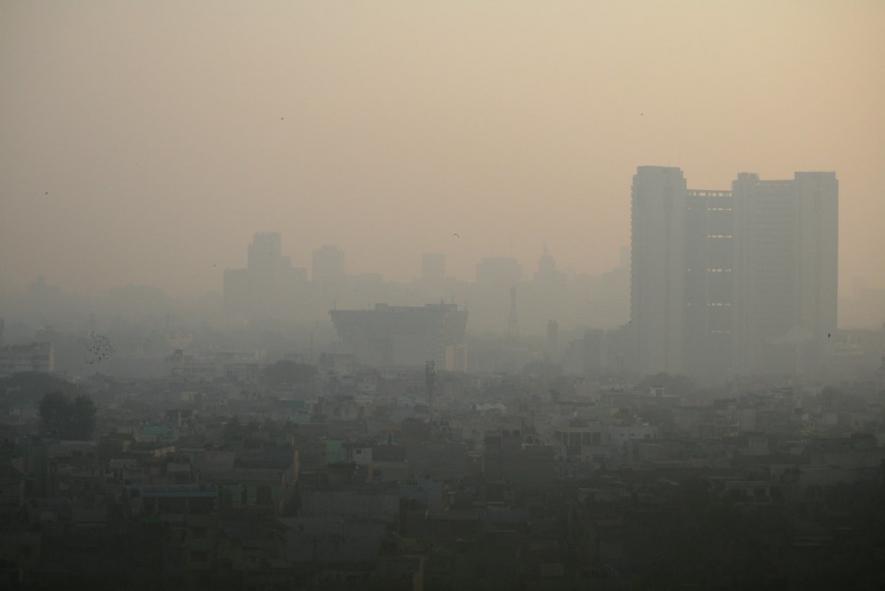West Bengal's Air Pollution Levels to Spike, Keep State in red Zone: Study

Representational use only.Image Courtesy: Flickr
Kolkata: A recent study carried out by the famed Bose Institute has forecasted that in 2023, West Bengal will witness an 8% rise in aerosol pollution and that the state is expected to remain in a highly vulnerable red zone for aerosol pollution in the said time period. It can be noted that this is the second highest aerosol pollution after Bihar, and factors like staple burning and construction dust contribute to it.
High aerosol amounts include particulate matter (PM2.5) and PM10, among other pollutants, along with sea salt, dust, black and organic carbon. Aerosol Optimal Depth (AOD) is the quantitative estimate of the aerosol present in the atmosphere, and it can be used in the proxy measurement of PM2.5.
The present study, entitled 'A Deep Insight into State-level Aerosol Pollution in India', was conducted by researchers Dr Abhijit Chatterjee and PhD scholar Monami Dutta at the Bose Institute. It provides a national scenario for aerosol pollution with long-term trends (2005-2019), source appointments and future scenarios (2023) for various Indian states.
West Bengal currently falls under the red category, the highly vulnerable zone with AOD over 0.5. Aerosol pollution is expected to rise by 8%, further pushing the AOD over 0.75 within the vulnerable zone (or red) zone in 2023.
“Due to its strategic location, West Bengal receives Indo Gangetic Plain air pollution outflows and its local emissions have put West Bengal in the highly vulnerable zone. West Bengal is already in the highly vulnerable zone; a nominal increase (approximately 8% projected increase in AOD) can cause a disastrous impact on the health and life of the people residing in this state,” said Dr Chatterjee, principal author of the study and Associate Professor of Environmental Sciences at the Bose Institute, while speaking to NewsClick.
However, from 2015 onwards to 2019, solid fuel burning (35%) became the primary emission source while the contribution of vehicular emissions (18%) dropped, becoming the least. “The reason for the drop in vehicular emissions could be due to the introduction of EURO-IV fuel standards and upgradation of engines, ban on 15-year-old vehicles etc. At the same time, vehicular-driven dust was replaced by construction-driven dust resulting from over-urbanisation,” Dutta told NewsClick.
He added, “The dominance of solid fuel burning in recent years could be because of the numerous unregistered and overabundant roadside eateries, restaurants, etc., across major cities in West Bengal.”
The study highlighted a list of recommendations to curb rising aerosol pollution in West Bengal. Chatterjee explained that, as observed from the study, another reason for solid fuel burning being the dominant source of aerosol pollution in the state was due to the increase in the price of liquified petroleum gas (LPG). The LPG price rise prompted underprivileged people to shift back to wood or other polluting fuels. At the same time, the frequency of roadside eateries also increased.
“The government should increase the subsidy rate at least for underprivileged people, which might show some relief to this situation. However, since we do not have any specific data for solid waste burning in India, we could not quantify the amount of reduction for this source of aerosol pollution,” said Chatterjee.
The study strongly backs the argument and concern recently raised by Cropper et al. (2021) that coal-fired power plants are the major culprits and the new planned/proposed power plants should never be approved, and we should seriously think of energy transitions from fossils to renewable without further delay to meet the required energy demands.
Another major concern, solid fuel burning, should also be taken seriously, especially in rural India, he said. "We feel that we need to ensure zero-solid fuel burning, at least for the domestic demands and in order to do this, the government should think of cutting down taxes and enhancing the subsidy on the LPG for all the poor and needy people at all the far-flung corners of our country without perturbing the economic viability. The high price might discourage people from using LPG and switch back to solid-fuel use," Chatterjee said.
Recently, in the COP-26 summit held in November 2021, India pledged to get its non-fossil energy capacity to 500 GW and meet 50% of its energy requirements by 2030 with renewable energy. While respecting this great commitment of the government, the researchers said that we must not forget that because of the scarcity of the proper, scientific and stringent policies and their implementations, such endeavours may not be able to see the face of success.
Get the latest reports & analysis with people's perspective on Protests, movements & deep analytical videos, discussions of the current affairs in your Telegram app. Subscribe to NewsClick's Telegram channel & get Real-Time updates on stories, as they get published on our website.
























